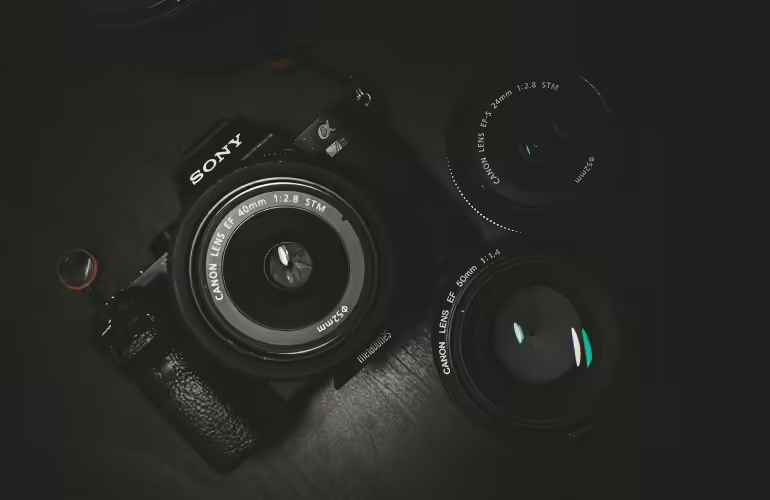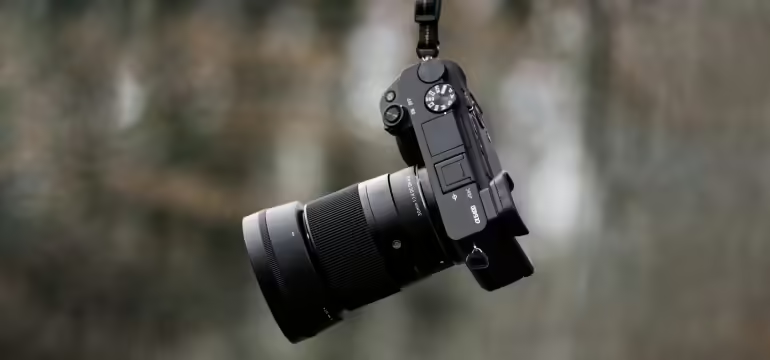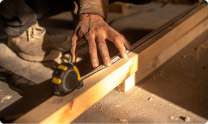Advertising Disclosure
Our team works hard to evaluate every product. If you click on links we provide, we may receive compensation.
Step-by-Step Guide: How to Choose the Right CameraSelecting the right camera can be a game-changer for your photography journey. Whether you’re a budding professional, an enthusiastic hobbyist, or a travel buff, how to choose a camera is a crucial skill. The perfect camera can elevate your photos and make shooting a joy. This guide will walk you through key considerations, camera types, and tips for making an informed decision.
At Shopper Advocate, we understand the importance of finding the right tool for your needs. We evaluate products based on quality, value, and usefulness to help you make the best choice. Let’s dive into the world of cameras and find your perfect match!
Understanding Your Photography Needs
Before you start browsing the best cameras in 2024, take a moment to reflect on your photography goals. Are you drawn to sweeping landscapes, intimate portraits, or fast-paced sports action? Your preferred genre will significantly influence your camera choice.
Consider Sarah, a nature enthusiast who loves capturing wildlife. She needs a camera with a fast autofocus system and excellent low-light performance for those dawn safari shots. On the other hand, Tom, an aspiring food blogger, prioritizes superior color reproduction and macro capabilities for mouth-watering close-ups.
Think about where you see yourself in a few years. Are you looking to go pro, or is this a hobby? Your future aspirations should also guide your decision when figuring out how to buy a camera.
Let’s explore some popular photography genres and their specific camera requirements:
- Landscape Photography: Look for cameras with high dynamic range and weather-sealing for outdoor shoots. A full-frame sensor can capture more detail in expansive scenes.
- Portrait Photography: Prioritize cameras with good skin tone reproduction and bokeh capabilities. A medium telephoto lens (85mm-135mm) is often ideal for flattering facial features.
- Street Photography: When exploring types of digital camera for street photography, consider compact models that don’t draw attention. Fast autofocus and good low-light performance are crucial for capturing fleeting moments.
- Sports Photography: High frame rates and excellent tracking autofocus are must-haves. Look for cameras with deep buffers to handle long burst sequences.
- Macro Photography: Seek out cameras with good close-focusing capabilities. Some models have special macro modes or in-body focus stacking features.
Remember, your needs might evolve. Choosing a versatile camera that can grow with you is often wise.
Identifying Key Features for Your Photography Style
Once you’ve pinpointed your needs, it’s time to match them with camera features. How to know what camera to buy often comes down to understanding these key specifications:
- Sensor size: Larger sensors generally perform better in low light.
- Megapixels: More isn’t always better, considering your typical output size.
- Autofocus: Look for advanced systems if you shoot moving subjects.
- Lens options: Consider the availability and cost of lenses for your chosen system.
For instance, a full-frame sensor with high ISO performance is crucial if you’re into astrophotography. Street photographers might prioritize a compact body with a silent shutter mode. Let’s dive deeper into these features:
- Sensor Size: Full-frame sensors offer the best low-light performance and dynamic range but are more expensive. APS-C sensors provide a good balance of quality and affordability. Micro Four Thirds sensors allow for more compact camera bodies.
- Megapixels: When considering what is a good camera, remember that while high megapixel counts can be impressive, they’re not always necessary. For most users, 20-24 megapixels provide ample resolution. Higher megapixel counts are beneficial if you frequently crop your images or make large prints.
- Autofocus: Modern cameras offer various autofocus systems. Look for features like eye-tracking for portraits, animal detection for wildlife, and wide coverage across the frame for versatility.
- Image Stabilization: In-body image stabilization (IBIS) can be a game-changer, especially in low light or when using telephoto lenses. It allows for sharper handheld shots at slower shutter speeds.
Budget Considerations: Finding Value for Your Investment
When it comes to cameras, price doesn’t always equal quality. What makes a good camera often depends on how well it fits your needs. Set a realistic budget, but consider additional costs like lenses and accessories.
A good digital camera doesn’t have to break the bank. Many mid-range models offer excellent features for most users. Consider buying last year’s model or a refurbished camera to save money without sacrificing quality.
Here are some budget-friendly tips:
- Look for older models: Camera technology evolves quickly, but last year’s model can still be an excellent choice at a lower price.
- Consider refurbished options: Many manufacturers offer certified refurbished cameras that function like new but cost less.
- Start with a versatile kit lens: While premium lenses can improve image quality, a good kit lens can serve you well as you learn.
- Invest in learning: Allocate some of your budget for photography courses or workshops. Improving your skills can have a bigger impact than upgrading gear.
- Rent before you buy: If you’re unsure about a camera, renting it for a weekend can help you make an informed decision.
Remember, when should I buy a camera is as important a question as which one to buy. Practice, creativity, and understanding your equipment matter more than having the latest gear.
Types of Cameras: Which One is Right for You?
Now that you’ve got a handle on your needs and budget, let’s explore the main camera types:
- DSLRs: These workhorses offer excellent image quality and a wide range of lenses.
- Mirrorless: Compact and lightweight, with advanced features rivaling DSLRs.
- Point-and-shoots: Perfect for beginners or as a backup camera.
- Smartphone cameras: Increasingly capable, ideal for casual shooters and social media enthusiasts.
Each type has its strengths and weaknesses. A DSLR might be overkill for casual vacation shots, while a point-and-shoot could limit a serious hobbyist. When wondering what camera is right for me, consider your skill level and how much gear you’re willing to carry. Let’s break down each type further:
DSLRs (Digital Single-Lens Reflex)
- Pros: Optical viewfinder, long battery life, extensive lens options
- Cons: Bulky, can be noisy, slower autofocus in live view mode
- Ideal for: Traditional photographers, those who prefer optical viewfinders
Mirrorless Cameras
- Pros: Compact, silent operation, advanced video features
- Cons: Shorter battery life, fewer native lens options (though improving)
- Ideal for: Travel photographers, vloggers, those who value portability
Point-and-Shoot Cameras
- Pros: Compact, easy to use, often have zoom lenses
- Cons: Limited manual controls, smaller sensors
- Ideal for: Beginners, those who prioritize convenience
Smartphone Cameras
- Pros: Always with you, easy sharing, computational photography features
- Cons: Limited zoom, smaller sensors, less control
- Ideal for: Casual photographers, social media enthusiasts
Remember, the lines between these categories are blurring, especially as we look towards camera 2024 trends. Many mirrorless cameras now rival DSLRs in capability, while some point-and-shoots offer manual controls and larger sensors.
Key Specifications to Consider When Choosing a Camera
Understanding camera specs can feel like learning a new language. Here’s a quick guide to some crucial features:
- ISO range: Higher numbers mean better low-light performance.
- Shutter speed: Faster speeds freeze action, while slower speeds create motion blur.
- Burst mode: Essential for sports and wildlife photography.
- Video capabilities: Look for 4K if you’re into videography.
- Connectivity: Wi-Fi and Bluetooth make sharing and remote control easier.
Remember, the best digital camera for you fits your specific needs. A landscape photographer might prioritize dynamic range over burst speed, while a sports shooter would do the opposite. Let’s explore these specifications in more detail:
- ISO Range: This determines the camera’s light sensitivity. A wider ISO range allows for better performance in low light. However, very high ISOs can introduce noise. Look for cameras with good high ISO performance if you frequently shoot in dim conditions.
- Shutter Speed: Fast shutter speeds (1/1000s and above) are crucial for freezing action. Slower speeds (1/60s and below) are useful for creative effects like motion blur. Some cameras offer extremely fast speeds (up to 1/8000s) or very slow speeds for long exposures.
- Burst Mode: Measured in frames per second (fps), this is important for action photography. Some high-end cameras offer 20fps or more, which is great for capturing the perfect moment in sports or wildlife photography.
- Video Capabilities: Any comprehensive digital camera guide should cover video features. If you’re interested in video, look for 4K resolution, high frame rates (60fps or 120fps for slow motion), and good autofocus during video recording. Some cameras also offer advanced features like log profiles for color grading.
- Weather Sealing: Consider a weather-sealed camera if you plan to shoot outdoors often. It protects against dust and moisture, giving you peace of mind in challenging conditions.
- In-body Image Stabilization (IBIS): This feature helps reduce camera shake, allowing for sharper images at slower shutter speeds. It’s particularly useful for low-light shooting and when using telephoto lenses.
Additional Accessories to Enhance Your Photography Experience
Your camera is just the beginning. Any thorough camera buying guide should emphasize that the right accessories can take your photography to the next level:
- Lenses: Invest in quality glass for sharper images and more creative options.
- Tripod: Essential for low-light shooting and long exposures.
- Camera bag: Protect your gear and make it easy to carry.
- External flash: Improve your lighting game for portraits and events.
When budgeting for your camera, set aside some funds for these extras. A versatile lens often makes a bigger difference than a slightly better camera body. Here’s a closer look at some essential accessories:
- Lenses: Consider the available lens options when deciding which camera to buy. Consider a versatile zoom lens for general use (like a 24-70mm) and a prime lens for low-light shooting and portraits (50mm f/1.8 is a popular choice). You might want to add wide-angle or telephoto lenses to your kit as you advance.
- Memory Cards: Invest in fast, reliable memory cards. For high-resolution cameras or those that shoot fast bursts, look for cards with high write speeds.
- Filters: A UV filter can protect your lens, while neutral density (ND) filters allow for long, bright light exposure. Polarizing filters can enhance skies and reduce reflections.
- Cleaning Kit: Clean your sensor and lenses with a blower, microfiber cloths, and cleaning solution.
- Extra Batteries: Nothing’s worse than running out of power during a shoot. Always carry spare batteries, especially for mirrorless cameras, which have shorter battery life.
Remember, you don’t need to buy everything at once. Add the essentials to your kit as your skills and needs evolve.
Conclusion: Making Your Final Decision
Choosing the right camera is a personal journey. Take your time, do your research, and don’t be afraid to try out different models in-store. Remember, the best cameras in 2024 might not be the best for you specifically.
Consider renting a camera before buying to get a feel for it. Many photographers find that when should I buy a camera is just as important as which one to buy. Keep an eye out for seasonal sales and new model releases, which often lead to great deals on slightly older models.
Here are some final tips to help you make your decision:
- Handle before you buy: A camera might look great on paper, but feel uncomfortable in your hands. Visit a store and try out different models to see what feels right.
- Read user reviews: When considering where I can buy a digital camera, look for retailers that provide user reviews. While professional reviews are valuable, user reviews can provide insights into long-term reliability and real-world performance.
- Consider the ecosystem: Think about the available lenses and accessories for the system you’re considering. A camera with a wider range of compatible gear offers more room for growth.
- Future-proof your purchase: While you shouldn’t overspend on features you’ll never use, consider a camera that offers a bit more than you currently need. This can save you from upgrading too soon.
- Trust your instincts: Sometimes, a camera just “feels right.” If you find yourself drawn to a particular model, that enthusiasm can translate into using it more often and improving your skills.
At Shopper Advocate, we’re committed to helping you find the perfect camera for your needs. We evaluate a wide range of options to provide you with unbiased recommendations. Whether you’re looking for a good digital camera for everyday use or a professional-grade tool, we’ve got you covered.
In the end, the best camera is the one that inspires you to shoot more. So grab your gear, get out there, and start capturing those amazing moments! Remember, photography is about creating memories, telling stories, and expressing your unique vision. The right camera is simply a tool to help you achieve that goal.
Happy shooting!








